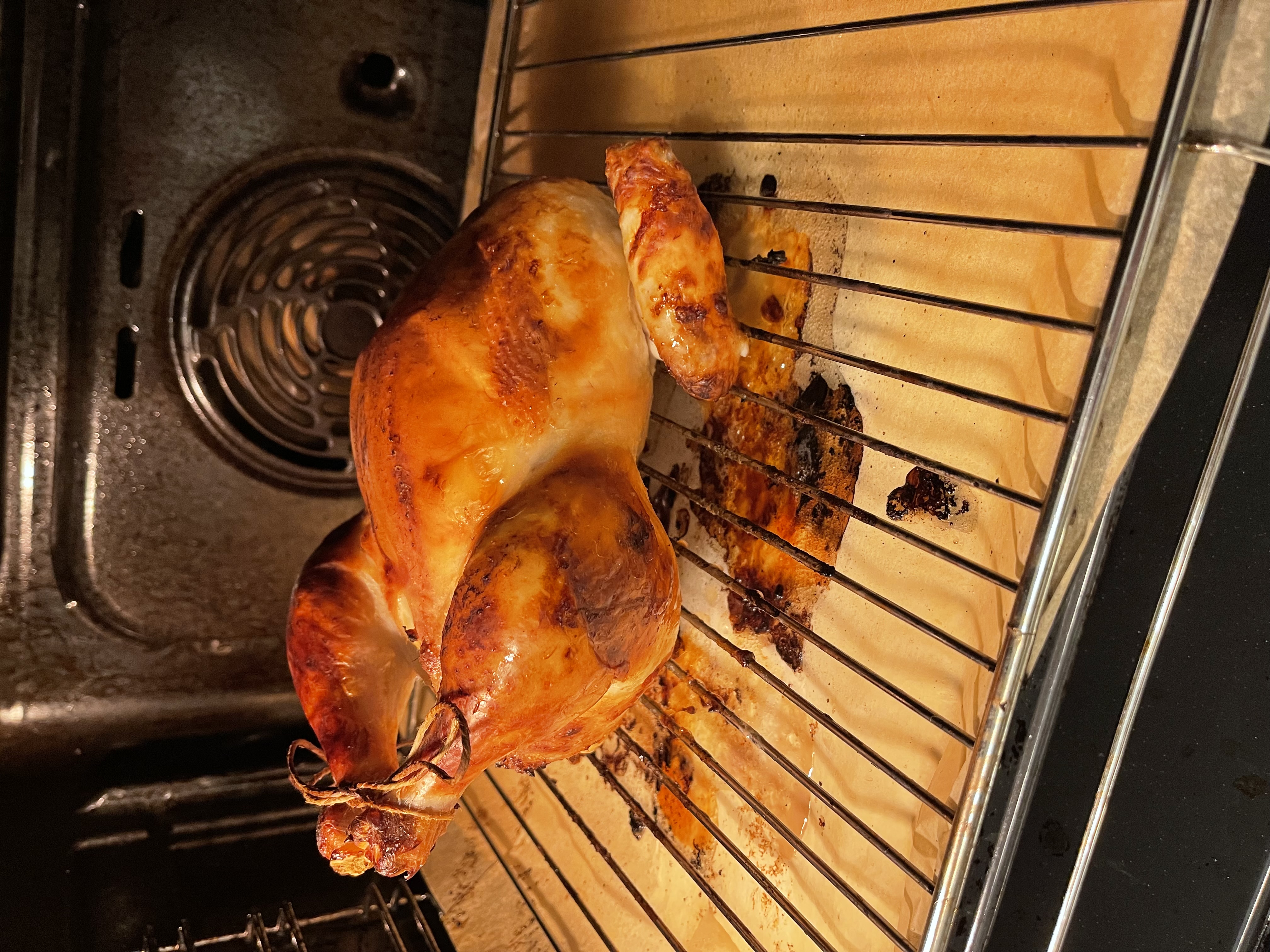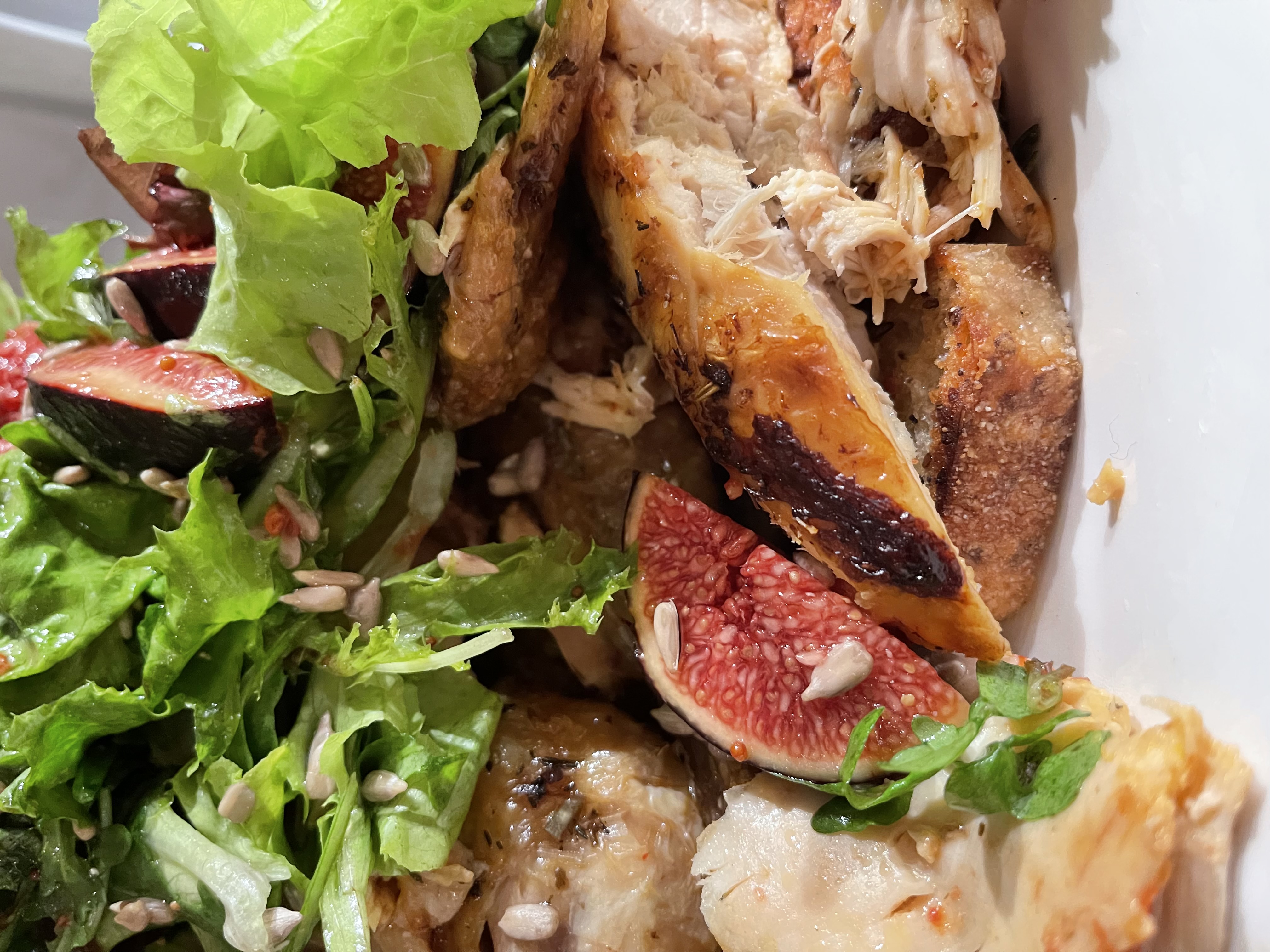Buttermilk Chicken
11.4.2023, recipes, notes

The practice of salting meat early creates a succulent flavor that in my experience cannot be replicated by salting later on in the cooking process. Brining, marinating, rubbing…all techniques used to pre-season and ensure a tender meat. Here are quick notes on salting early:
brining — meat soaked in a salt water solution
marinating — salt water solution + acidic component such as lemon juice or vinegar which breaks down the meat and allows herbs or spices to flavor the meat
rubbing — a dry mix of spices, salt and/or sugar to flavor and tenderize meat
brining — meat soaked in a salt water solution
marinating — salt water solution + acidic component such as lemon juice or vinegar which breaks down the meat and allows herbs or spices to flavor the meat
rubbing — a dry mix of spices, salt and/or sugar to flavor and tenderize meat
Below is my mom’s buttermilk chicken recipe which she adapted from Samin Nosrat. It employs marinating as the pre-seasoning technique. If you don’t have access to buttermilk, you can make your own substitute using whole milk and lemon. Just squeeze the juice of one lemon in a cup of whole milk, stir, and allow to rest for 10 minutes before using. After roasting the chicken, save the pan drippings for a vinaigrette, to dip bread in, as the base of a sauce..email us if you need help. Save any leftover chicken for chicken flautas.
1 whole 3-4lb chicken, cleaned and patted dry with a paper towel
Fine sea salt
475ml or about 2 cups of buttermilk
Season the whole chicken generously with salt, rubbing under wings and crevices. Place it in a deep dish and let it sit for 30 minutes. Pour the buttermilk all over the chicken and use a spoon to ladle the buttermilk over the chicken making sure it’s covered completely. Cover in plastic and allow to marinate in the fridge for 24-48 hours. You can uncover the chicken and ladle more of the buttermilk on it every so often if you wish.
Preheat the oven to 425°F or 215°C and remove the chicken from the refrigerator. Allow it to reach room temperature then scrape off the excess buttermilk still on the chicken. You don’t want it to be too wet for the skin to crisp in the oven. Use a paper towel to pat if you need to.
Place the chicken directly on a rack and slide a roasting pan beneath the rack. Both go into the oven. The legs of the chicken should first point back left. After about 20 minutes in the oven, reduce the heat to 400°F or 205°C and continue roasting for 10 minutes. Then, move the chicken (or the rack) so the legs face back right. Continue to cook for 20 min or until completely browned.




